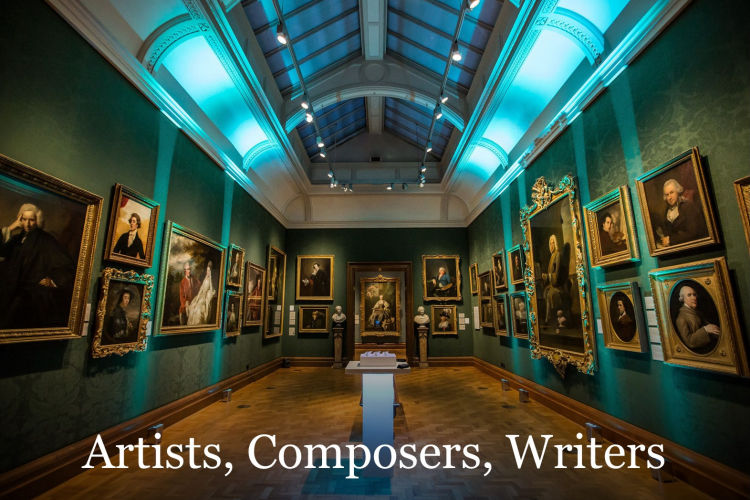GO TO: [A–C] [D–G] [H–K] [L-O] [P–S] [T–V] [W–Z]

Internationally decorated as one of the great directors of all time, Altman was known for his large-cast free-form projects that tied many short glimpses together into a complex tapestry. His most famous films include M*A*S*H* (1970), Nashville (1975), and Gosford Park (2001). [6]
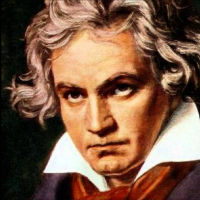
The dominant composer of his time, Beethoven wrote 9 symphonies, 16 string quartets, and 32 piano sonatas, among numerous other works. From about 1800 onwards, increasing deafness gradually put an end to his performing career, although he wrote some of his finest works when totally deaf. He is one of the first composers to exhibit a distinct late style. [1, 4]
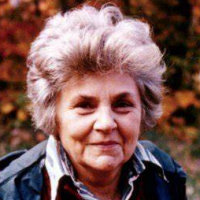
Moore, who was born in Massacusetts but brought up in Noval Scotia, originally wanted to become a composer, but was steered into poetry by Marianne Moore; later, she became a close friend of Robert Lowell. She has been hailed as the most gifted poet of her generation. [4]

Boïto composed a number of operas, of which Mefistofele (1867) is the most often performed. But his fame rests mainly on his masterly libretti for Verdi (Othello and Falstaff) and several other composers. [6]
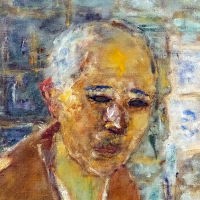
A member of the Nabis group early in his career, Bonnard later went his own way, specializing in lushly colored garden scenes and interiors; especially memorable are those of his wife in the bath (she suffered from a skin condition). There are also a number of quite revealing self-portraits. [3]
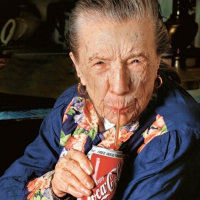
Bourgeois was born and trained in France, but moved to New York in 1938. It was only there that she turned to sculpture, the art form in which she is best known, working in a variety of media and every scale from intimate the monumental. Although her work is abstract, it often has human references. [5]
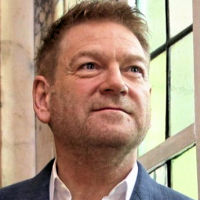
Branagh was born in Belfast, but moved to England with his family at the age of 9 to escape the Troubles. He made a triumphant debut with the Royal Shakespere Company as Henry V, which he used as the basis for his own series of Shakespeare films, in which he both starred and directed, later branching out to include roles from Frankenstein to Hercule Poirot. He does not appear in his 2021 autobiographical film Belfast, however, since it features his experiences as a young boy. [5]

Making his reputation with somewhat pastoral chamber music and songs, Bridge developed a more cosmopolitan style in the 1920s, aligning him with the developments of Schönberg and others. He is also important also for encouraging the talent of Benjamin Britten, who studied with him in his teens. [5]
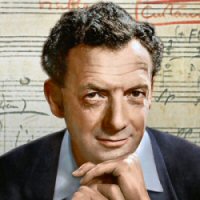
Although he has written in most genres, Britten's greatest achievement may be his vocal music: 15 operas and numerous song cycles and choral works, showing an unparalleled sensitivity to English verse. His first opera , Peter Grimes (1945), may be credited with establishing the viability of English opera in modern times. [3]

More than any other American composer, Carter developed the techniques of Schönberg and Webern to new heights, combining rigor and invention. The Concise Oxford Dictionary of Music writes "his music is uncompromising and challenging, its harsh brilliance enhanced by compelling intellectual qualities." [5]

EM Forster described Cavafy as "a Greek gentleman in a straw hat, standing absolutely motionless at a slight angle to the universe." His translator Maria Margaronis wrote that his work "holds the historical and the erotic in a single embrace." Living all his life in Alexandria, he mined the past for inspiration, but refused to publish his work formally; most of it appeared only after his death. [5]

Living in Paris before WW1, and in Russia during it, Chagall mingled with the most innovative artists of the time, but though he learned from them, he quickly developed his own colorful style and personal iconography. These he continued for the rest of his life, working in France, with a wartime sojourn in New York. The main spurs to his creativity in later years were Jewish themes and music. [6]
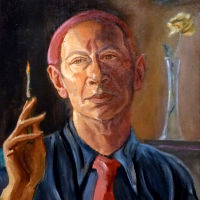
One of the best-known American modernists of the earlier 20th century, Cummings treated generally accessible themes in a characteristic style that avoided capital letters, treated punctuation in unconventional ways, and used line-length and layout for visual and expressive effect. He was also an acomplished painter; the illustration here is a self-portrait. [6]
GO TO: [A–C] [D–G] [H–K] [L-O] [P–S] [T–V] [W–Z]
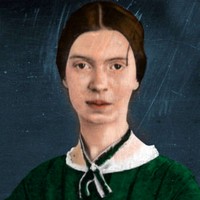
As she lived in Amherst for her entire life, latterly refusing to leave her family home, Dickinson's prolific output was virtually unpublished in her lifetime, and was subject to editing after her death to bring it more in tune with contemporary aesthetics. But it is precisely the unconventional nature of her verse, with its short lines and slant rhymes, that has led to her recognition as one of the leading Americal poets of her time. [4]

After service in the First World War, recorded in some of his most savage paintings, Dix became a critical commentator on social conditions in the Weimar Republic. [4]

The author of over a dozen novels, Dunmore won the inagural Orange Prize for Fiction with A Spell of Winter (1995) and the Costa Book of the Year Prize for her posthumous poetry collection Inside the Wave. [6]
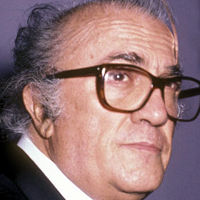
After a brief stint as a law student to please his parents, Fellini broke out as a cartoonist, writer, and later filmmaker. Beginning in the neo-realist style with works like La strada (1954), he gradually moved towards the more fantastic treatment that defined his style, in films like La dolce vita (1960), 8½ (1963), and Amarcord (1973). He is commonly listed among the greatest directors ever. [5, 6]

His outsanding ability as an improviser on the organ attracted much attention, but his other works met with little interest until a concert organized by his pupils spurred him to new invention in the last few years of his life. [5]
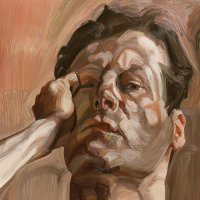
Born in Berlin, the grandson of Sigmund Freud, Lucian came to Britain in 1931 with his parents and became a British citizen in 1939. One of the leading representational painters in postwar Britain, he was also her leading portraitist, albeit in an uncompromising and less traditional style.

With Cézanne and Van Gogh, Gauguin is considered one of the giants of Post-Impressionist French painting, and arguably the most directly influential. A master of color, he depicted peasant scenes from Brittany, Tahiti, and the Marquesas Islands, many of them with a distinct religious or philosophical content. [4]
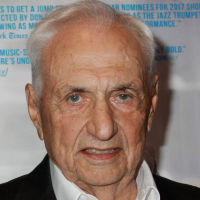
Born Frank Owen Goldberg in Toronto, he studied originally in Canada, then at the University of Southern California when his family moved to America. Although he had been making unusual buldings for much of his career, the work that established him as an international superstar was the Guggenheim Museum in Bilbao, Spain, which opened in 1997. [3]
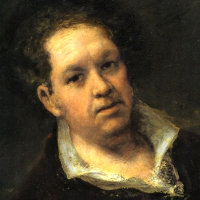
A slow developer, he began as a somewhat conventional Rococo painter and tapestry designer, but developed into an insightful portraitist, and—after going totally deaf in 1792—a savage social critic as a printmaker, and painter of some of the most terrible events of his time. His series of "black paintings" from the end of his life display a shattering visionary intensity. [1]
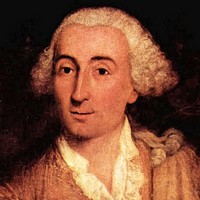
The principal Venetian veduta (view) painter after Canaletto, Guardi's style was more rococo and fleeting, giving more play to the imagination. In addition to views of Venice, he did a large number of Capriccios comprised of Venetian elements combined in a ruined or picturesque manner. [3]
GO TO: [A–C] [D–G] [H–K] [L-O] [P–S] [T–V] [W–Z]
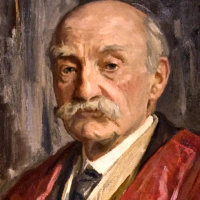
Although thinking of himself primarily as a poet, Hardy is most often remembered as the author of pastoral realist novels set in "Wessex," his name for a large swath of Southwest England, the country that he loved. While Far From the Madding Crowd ends happily, more of his novels have an elegaic pessimism that is found also in his verse.
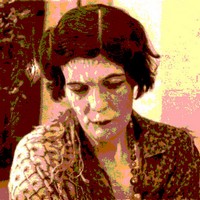
The daughter of a professor of astronomy at Lehigh University in Pennsylvania, Doolittle briefly attended Bryn Mawr to study Greek Literature. There she met the poets Wallace Stevens, Marianne Moore, and most importantly Ezra Pound, who published her first poems with those of other Imagists, using her initials rather than her full name. She moved to England in 1911, and seldom returned to America. [2]
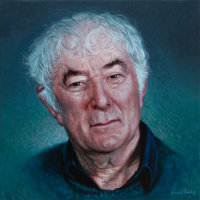
Nobel Prizewinner Heaney was born in Northern Ireland, making him technically a British citizen. But he has preferred to identify himself with the Republic of Ireland, portraying her scenery and commenting on her culture and politics. In later years, he taught at Harvard. [6]
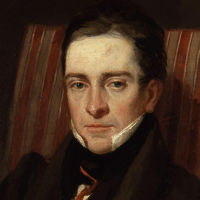
Called "the finest English poet between the generations of Shelley and Tennyson," Hood wrote both humorous and serious verse for various periodicals and a magazine that he himself published. For most of the last five years of his short life, he was confined to bed through ill health. [5]
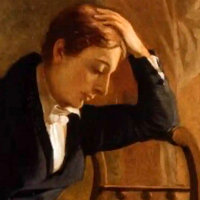
Keats was a second-generation Romantic, contemporary with Byron and Shelley. By the time he died of tuberculosis at the age of 25, he had been publishing for less than four years. Nevertheless, later critics have hailed him as one of the greatest English poets, especially for his Sonnets and series of Odes. [4]
GO TO: [A–C] [D–G] [H–K] [L-O] [P–S] [T–V] [W–Z]
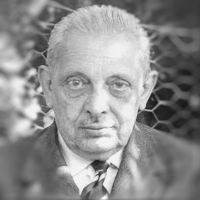
The last descendant of ancient Sicilian nobility, Lampedusa wrote his only novel, Il Gattopardo (the Leopard), in his final years because he felt he was in a unique position to chronicle the decline of his family and the vanished way of life of the Sicilian aristocracy. He did not live to see it published. [2]
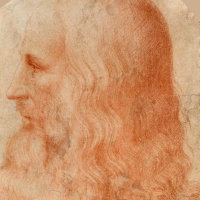
With Michelangelo and Raphael, one of the triumvirate of artistic geniuses that crown the High Renaissance. He trained in Florence with the painter Andrea Verrocchio before moving to the court of Ludovico Sforza in Milan. He spent the last years of his life at the court of François I in France. The naturalism and luminosity of his painting, and his effects of sfumato (or modeling as if by smoke), were widely influential. It is his notebooks, however, that are the best testament to the range of his genius, containing remarkable observations of the natural world, and mechanical inventions centuries before their time. [1]
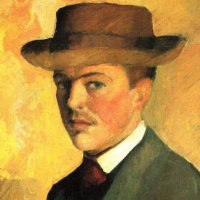
With Kandinshy and Marc, Macke was a co-founder of the Blaue Reiter group of German Expressionists in 1911, but his style was more influenced by French examples, his color less strident and more harmonious, and his subjects less abstract. He was killed in the first year of WW1. [4]
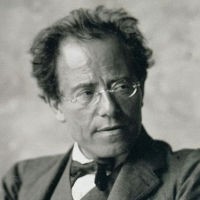
In the summers during his appointment as director of the Vienna State Opera, he completed nine symphonies, numerous songs, and his masterpiece, the "song-symphony" Das Lied von der Erde (The Song of the Earth, 1909). His works typically use very large orchestras and incorporate a wide range of musical styles. [4]

Though a leading light among Symbolist French poets in the late 19th century, Mallarmé lived in relative obscurity, apart from his salons that attracted the likes of Verlaine, Valéry, Rilke, Yeats and others. The formal innovations in his later work pointed the way to the modernism of the next century.

Winner of the 1929 Nobel prize in literature, Mann's best-known works date from before he fled from Germany in 1933: these include the novels Budenbrooks and The Magic Mountain and the novella Death in Venice. Eventually settling in America, he continued to write until his death. [3]
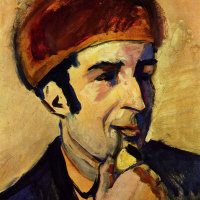
Visits to Paris introduced him to the work of Van Gogh, which nudged his style towards Expressionism, and led to his joining with Macke and Kandinsky in the Blaue Reiter group in 1911. His somewhat mystical disposition led him towards an abstract style depicting the inner lives of animals. He died fighting in WW1. [4]

Matisse and Picasso stand as the giant pillars of French art in the first half of the 20th century. Matisse was the slower starter and the less versatile, but he stands alone for the richness of his color and the sensuality of his forms, whether in painting or in sculpture. Suffering from crippling arthritis at the end of his life, he produced a completely new oeuvre in colored-paper collage. [6]
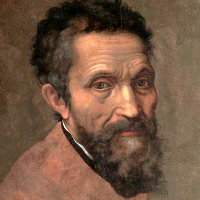
A towering universal genius, his work virtually defines the Italian High Renaissance. He made his name primarily as a sculptor in his native Florence, though he worked elsewhere as well. His most famous works, however, are in Rome: the ceiling of the Sistine Chapel (1508–12) and his work from 1546 as leading architect of the Basilica of St. Peters, one of a succession of masters who brought the building to its present form. [1]
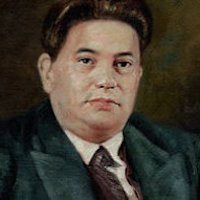
A member of Les Six (with Satie, Poulenc, and others), Milhaud was a prolific composer in all media, noted for his early use of jazzand his experiments in polytonality and unusual instrumental combinations. [6]
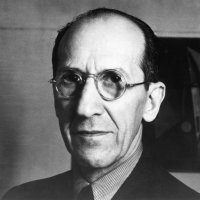
After painting in a fairly naturalistic, he went through a rapid development between about 1910 and 1915, moving towards total abstraction, the elimination of curved lines and mixed colors, joining with Theo van Doesburg in 1917 to create the movement De Stijl. He spent his last four years in New York City, where his manner became less monumental and more syncopated, no doubt inluenced by the jazz he loved. [6]
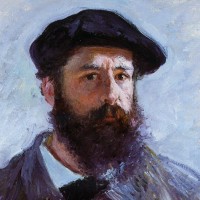
The central figure in Impressionism (it was his Impression: Sunrise of 1872 that gave the movement its name), he intensified its focus more than any other artist, continuing well into the next century to produce series of paintings showing minute variations in the light and color in basically the same scene. Cézanne famously said of him, "Monet is nothing but an eye—but my God, what an eye!" [3]
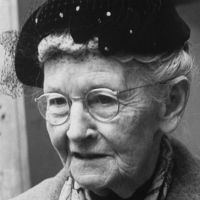
Moses, who lived on a New England farm for her entire life, took up painting only at the age of 78, when her arthritis put an end to her embroidery. Her depictions of simple country scenes, peopled with busy figures, became immensely popular in the 1950s. [2]
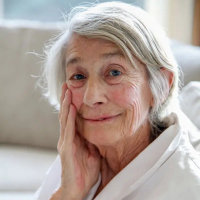
Winner of the National Book Award and Pultizer Prize, Oliver's work is "inspired by nature, rather than the human world, stemming from her lifelong passion for solitary walks in the wild [and] characterised by a sincere wonderment at the impact of natural imagery, conveyed in unadorned language." [Wikipedia] [6]
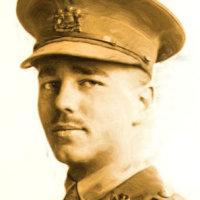
Owen's poetry of the First World War emphasizes its futility and horror, in contrast to the stoic patriotism in vogue at the time. He himself was killed in the last week of the war. His establishment as preeminent poet of the war was greatly aided by Benjamin Britten's War Requiem (1960), which sets Owen's poetry against the Latin text. [4]
GO TO: [A–C] [D–G] [H–K] [L-O] [P–S] [T–V] [W–Z]
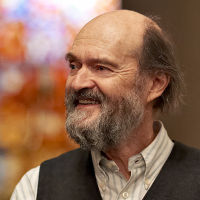
Pärt is the leading composer in the style sometimes nicknamed "holy minimalism," that uses very simply musical processes and materials to create a deeply spiritual effect. While he has written orchestral and choral music of great power, many of his best-known works, such as Fratres (1977) and Spiegel im Spiegel (1978) are for small chamber combinations. [3]
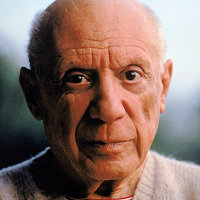
Picasso's invention of Cubism around 1910 (with Georges Braque) made him arguably the most important figure in 20th-century art. However, his entire career from precocious youth to energetic old age was distinguished by rapid changes of style, constant experimentation with new media, and a gift for finding the exact image to capture an historical moment, as in his Guernica of 1937. [2, 4]

Piper specialized in paintings and prints of England, especially its ancient buildings. He designed stained glass for the new Coventry Cathedral, and the sets for the premiere productions of almost all the operas of Benjamin Britten. [3]
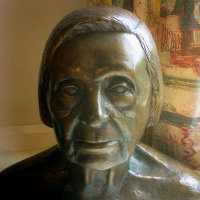
From 1935 to 1937, she edited the periodical Axis which was devoted to abstract art. She married the artist John Piper in 1937. Discovering an unexpected talent as a poet, she had a successful later career as an opera librettist, including adapting The Turn of the Screw and Death in Venice for Benjamin Britten. [3]

Plath began publishing when a student at Smith College. Coming to England, she met and married the future Poet Laureate Ted Hughes, and had two children with him before the marriage collapsed. Her life was punctuated by several attempts at suicide, which finally succeeded, but her conflicting energies gave rise to the poems of her remarkable posthumous collection, Ariel. [4]
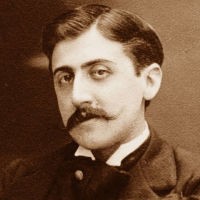
Proust came from a well-to-do family, and spent much of his youth in society, experiences that served him in writing his monumental À la recherche du temps perdu (In Search of Lost Time, originally translated as Remembrance of Things Past) which he began in 1913, one of the greatest celebrations of the power of memory in literature. He suffered from poor health his entire life, and died at the age of 51. [5]
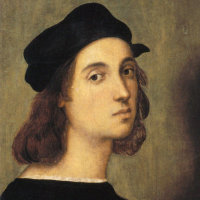
One of the towering geniuses of the Italian Renaissance, Raphael was born in central Italy, and worked there until 1508, when he moved to Rome to decorate several stanze in the Vatican for Pope Julius II, and later his successor Leo X. The influence of these and other works of the period can be seen in religious art for many centuries to come. [1]

The greatest artist of the Dutch Golden Age, he nonetheless retained his own style which set him apart from his contemporaries. There is a strong baroque influence earlier in his career, but his later work developed a quality of deep introspection in which the subject seems to glow within rich layers of paint. [5]
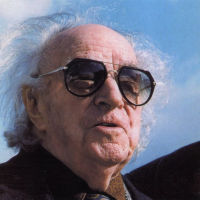
Rendered blind by illness at the age of three, Rodrigo nonetheless rose to become the most celebrated Spanish composer of his time, especially in works for guitar—an instrument he did not himself play—such as the Concierto de Aranjuez (1939) and Fantasia para un gentilhombre (1955). [5]

Rothko, born Markus Yakovlevich Rothkowitz, came to the United States from Latvia as a child. His iconic paintings, consisting of fuzzy colored rectangles stacked vertically, established him as one of the leading Color Field artists of the mid-century. His final work was a series of twelve dark canvases for a non-denominational chapel in Houston, Texas. [4]
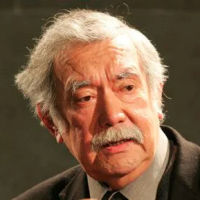
Starting as a prolific playwright, Ruiz made his first films in Chile in 1968, but fled to Paris in 1973 to escape the Pinochet regime. There, he made a reputation for experimental low-budget films, before gradually attracting international producers and stars in works like his Proust realization Time Regained (1999), which perfectly matched literary narrative to his dreamlike style. [5]
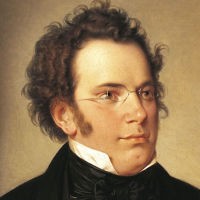
Although he died before his 32nd birthday, Schubert was extremely prolific as a composer, writing symphonies, masses, chamber music, piano sonatas, and over 600 songs, both individually and in cycles. Though little known in his lifetime, his work was rediscovered and championed by Mendelssohn, Liszt, and Brahms, making him in effect the source of the German Romantic movement. [4]
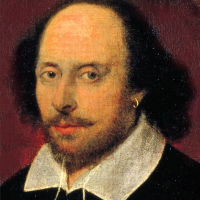
Shakespeare's 37 plays (comedies, histories, tragedies, and others that defy classification) and his 154 sonnets are so well known, as are the basic facts of his life, that it would be redundant to attempt even a thumbnail bio here. [2]
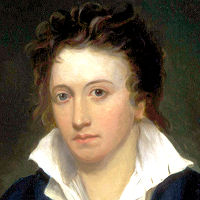
With his friend Byron, Shelley was the outstanding English Romantic poet of the generation after Wordsworth and Coleridge. Politically engaged, and intellectually acute, he was an avowed atheist, a stance that got him expelled from Oxford, and kept him out of England for much of his short career. He drowned in a boating accident off Livorno at the age of 29. His second wife, Mary Godwin Shelley, was the author of Frankenstein. [5]
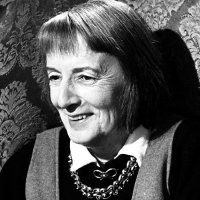
Florence Margaret Smith, known as "Stevie," published three novels and nine volumes of poetry during her lifetime, many of which deal directly with the subject of death. The 1978 film Stevie was based on her life. [4]
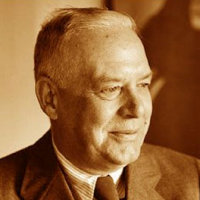
The winner of the Pulitzer Prize in 1955, Wallace Stevens established himself as one of the leadingModernist poets in America, while earning his living as an Insurance executive. His poem "Thirteen Ways of Looking at a Blackbird" has been set by numerous composers. [4]

As a poet and playwright, Stramm kept company with the German Expressionists in the early years of the century, and was considered a leader among them. His radical style, consisting of staccato words and phrases unconnected by syntax, proved utterly appropriate to describe the First World War, in which he lost his life. [4]
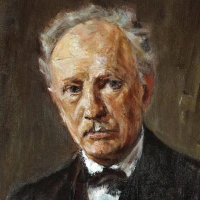
You might say that Strauss had two careers: as an orchestral composer, and as an opera one. His tone poems in the 1890s such as Don Juan and Till Eulenspiegel brought him immediate fame, but he wrote his last big orchestral work in 1915. Meanwhile his operas Salome (1905) and Elektra (1909) continued his radical Expressionism, but with Der Rosenkavalier (1911), he began a stylistic retreat that continued until his last opera, Capriccio, in 1942. [2]
GO TO: [A–C] [D–G] [H–K] [L-O] [P–S] [T–V] [W–Z]
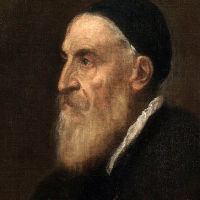
Arguably the greatest Venetian painter of the High Renaissance, he produced works in just about every genre over an exceptionally long career. Probably his greatest influence was in his handling of paint and use of color, which became a starting point for Rubens and others in the next century. [1]
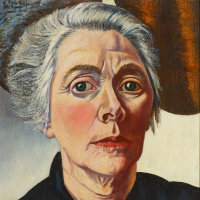
Charley (Annie Caroline Pontifex) Toorop was the daughter of the Dutch Modernist painter Jan Toorop. She painted portraits and other figure subjects with a bold intensity that suggests more than its surface reality. [4]
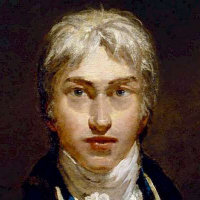
Rivaled only by Constable, Turner was the dominant British landscape painter of the first half of the 19th century, he started his career with topographical views intended for engraving, and ended with works whose subjects were dissolved in veils of paint and light. [1, 2, 4]
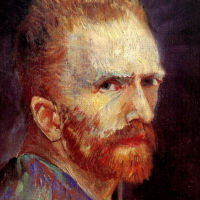
Beginning in his native Holland with dark paintings of peasant life, his style was transformed when he went to Paris in 1886, and thence to Arles, where he lived with Paul Gauguin. Although prolific in his output, he suffered from severe depression and eventually brought on his own death, while living close to his doctor in the north of France. [4]
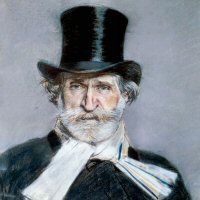
Verdi's two dozen or more operas (depending on how you count them) make him the leading Italian opera composer of his time and among the two or three greatest opera composers ever. After what he called his "years in the galleys," he hit his stride in the early 1850s with the trio of Rigoletto, Il Trovatore, and La Traviata. He intended Aïda to be his last work, but was persaded out of retirement to write his final Shakespearean masterpieces: Otello (1886) and Falstaff (1893). [6]
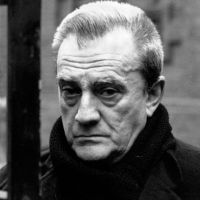
Though born into a Milanese aristocratic family, Visconti became a Communist, and his earlier films depict working-class life with brutal realism. In 1963, with his filming of Lampedusa's The Leopard, his style changed totally, and his last works are noted for their opulent depictions of decadence. He was also one of the greatest opera directors of his time. [2, 3]
GO TO: [A–C] [D–G] [H–K] [L-O] [P–S] [T–V] [W–Z]
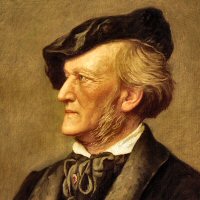
Wagner almost single-handedly transformed the nature not only of opera but also of harmony and orchestration. His 10 mature operas include Tristan und Isolde (1865), Die Meistersinger von Nürnberg (1868), and the vast tetralogy Der Ring des Nibelungen (completed 1876), for which he had a special theater built at Bayreuth. His final opera, Parsifal (1882), was written for exclusive performance at that theater. [3]
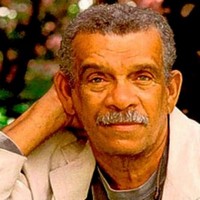
Winner of the 1992 Nobel prize in literature, Walcott was a world traveler who kept returning to his birthplace of Saint Lucia, infusing his work with Caribbean history, light, and color. His 1990 epic Omeros attempts nothing less than an overview of the African diaspora in the manner of Homer. [3]
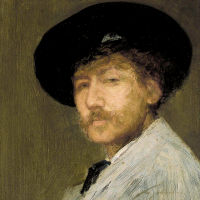
Whistler's American father was a railroad engineer who took work in Russia when the future artist was still a child, so his training and career took place almost entirely in Europe. He was famous for giving his near-abstract paintings such as Arrangement in Grey and Black (the portrait of his mother), thus emphasizing the connection between painting and music. [3]
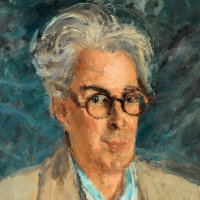
Although a Protestant of Anglo-Irish descent, Yeats was a major force in the Irish literary revival at the turn of the century, and a founder of the Abbey Theatre in Dublin. His poetry, which began in a lyrical late-Romantic manner, later became more modernist and more politically engaged. He served two terms as a Senator of the Irish Free State. [1]
